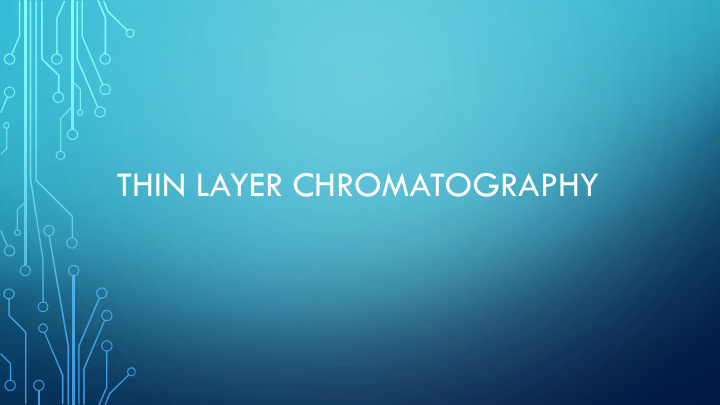



THIN LAYER CHROMATOGRAPHY
Principle • It is based on adsorption phenomenon • It is based on the principle that different compounds are adsorbed at different places on the stationary phase of the TLC plate with different strengths • These are disorbed by the mobile phase basing on their polarity
Experimental procedure Stationary phase silica gel G,alumina G,cellulose etc., Mobile phase n-hexane,benzene, chloroform,methyl hexane etc., • In this technique a thin layer of silica gel is coated on the glass plate • A diluted solution of the sample in acetone is applied as a spot on the TLC Plate 1cm. Above from the end of the plate
• This parted TLC plate is developed by keeping vertically in the TLC chamber contain few ml of organic solvent such as acetone • It must be slightly below the level of the spot on the TLC plate • The solvent moves up the plate through the stationary phase by the capillary action • The solvent pushes the compounds in the solvent upwards by moving upwards • As a result the compounds in the sample moves up with the sample with different speeds an gets absorbed at different places basing on their polarity as bright spots
• After the solvent front I sreached the TLC plate is taken out of the chamber and marking is done on the solvent front with a pen • Then the plate is dried until solvent is evaporated
• The no of spots produced on the TLC plate give no of compounds in the mixture • The compounds in the sample are known by comparing the Rf factor of the spots with the Rf factor of the known compounds • The spots on the plates are scrapped and leached by using organic solvents for the seperation of compounds
Recommend
More recommend